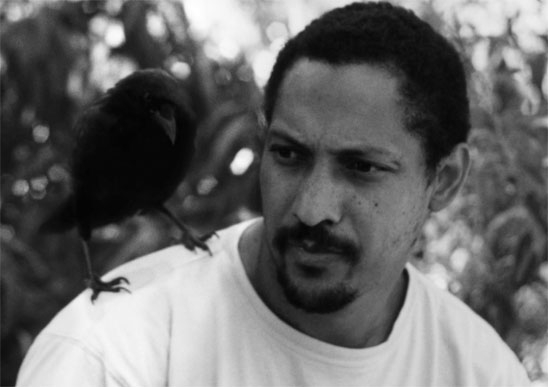
Last year, I read Percival Everett’s Assumption — the first of his books I’d encounter, after reading glowing recommendations from a number of smart readers. It’s still inside my head: it begins like a traditional procedural, and then grows stranger and stranger as Everett keeps revealing that certain things we might have taken for granted are, in fact, not present at all. The whole thing led to a strange, haunting ending (or series of endings) — tightly controlled, and ominous in its implications. Earlier this week, I sat down with Everett’s latest, Percival Everett by Virgil Russell, which is an entirely different kind of novel — and yet still contains that pinpoint accuracy and that invocation of the irrational.
Initially, it’s structured as a series of conversations between an aging father and his son; narratives emerge from this and go in places unintended by their teller. There’s a riff on William Styron’s Confessions of Nat Turner; there’s an account of a doctor treating an obese man who pays him in camera parts, and memories of the Civil Rights movement in the 1960s. That there’s a character in here named Murphy suggests a hat-tip to Samuel Beckett’s novel of the same name — those themes of isolation, of reality being a constantly shifting ground, are all present here. It’s dizzying at times, but the themes of family, of grief, and of mortality keep it grounded — at its heart, this is a story of fathers and sons, albeit a deeply unvconventional one.
From parents and children, we move to siblings. I read Susanne Kippenberger’s biography of her brother Martin, Kippenberger: The Artist and His Families (ably translated by Damion Searls, and with an introduction by John Wray) — I’d been intrigued by his work ever since I saw a survey of it at MoMA a few years ago. It’s a detailed portrait of art and life in Germany in the second half of the twentieth century; rather than looking at her brother’s work from a critical perspective (which is understandable), Kippenberger takes a more biographical approach, finding the childhood references and obsessions that permeated his work throughout his life. Curiously, I found myself reading this at roughly the same time as Jeff VanderMeer’s Shriek: An Afterword, set in a hallucinatory, fungus-ridden city and structured as one writer’s extensive afterword to her (ostensibly) vanished brother’s work of history. Though her brother seems to have annotated this pretty throroughly, which begs the question of what, exactly, is going on. There’s a sense of one-upsmanship present throughout, with differing accounts of multiple events cited. Did I mention the weird funguses, or the underground societies, or the mysterious machines that all factor in to the plot? It’s deeply unsettling stuff.
After reading, and enjoying, Kiese Laymon’s novel Long Division, I turned my attention to his collection of essays, How to Slowly Kill Yourself and Others in America. Several of these detail his own family history; others delve into broader political thought, and still others look at cultural matters, from music’s relationship to geography (and vice versa) to how people listen to Kanye West. And then there’s “You Are The Second Person,” which will likely inspire a feeling of dread in any writer who reads it. Laymon’s account of a particularly horrific run-in with an editor is the stuff of nightmares (at least, for some), as well as being a thorough look at how works can evolve over time.
Kate Christensen’s Blue Plate Special: An Autobiography of My Appetites is a similar look at one writer’s evolution. Christensen begins with her childhood — sometimes wrenching, sometimes idyllic — and goes from there. Novels are written, relationships begin and end, and family dynamics shift over time. Connecting these elements is Christensen’s connection to food, which manifests itself in a variety of ways, from a connection to family to something that finds its way into her writing. It’s not for nothing that one of her novels is titled The Epicure’s Lament, after all. After reading this, one comes away with a comprehensive picture of Christensen’s work and life, as well as parts of the country ranging from Arizona to both Portlands to Brooklyn in the mid-90s. It’s a detailed and insightful memoir.
Follow Vol. 1 Brooklyn on Twitter, Facebook, Google +, our Tumblr, and sign up for our mailing list.
